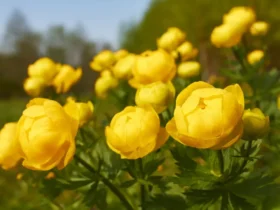In the world of Australian native flora, the Melaleuca pulchella, commonly known as the Clawflower, stands as a delicate and captivating species within the Melaleuca genus. With its unique appearance, intricate flowers, and ecological significance, this shrub has garnered attention from botanists, horticulturists, and nature enthusiasts alike. In this article, we embark on a journey to uncover the allure of Melaleuca pulchella, delving into its characteristics, habitat, cultural importance, and its role in the diverse Australian landscape.
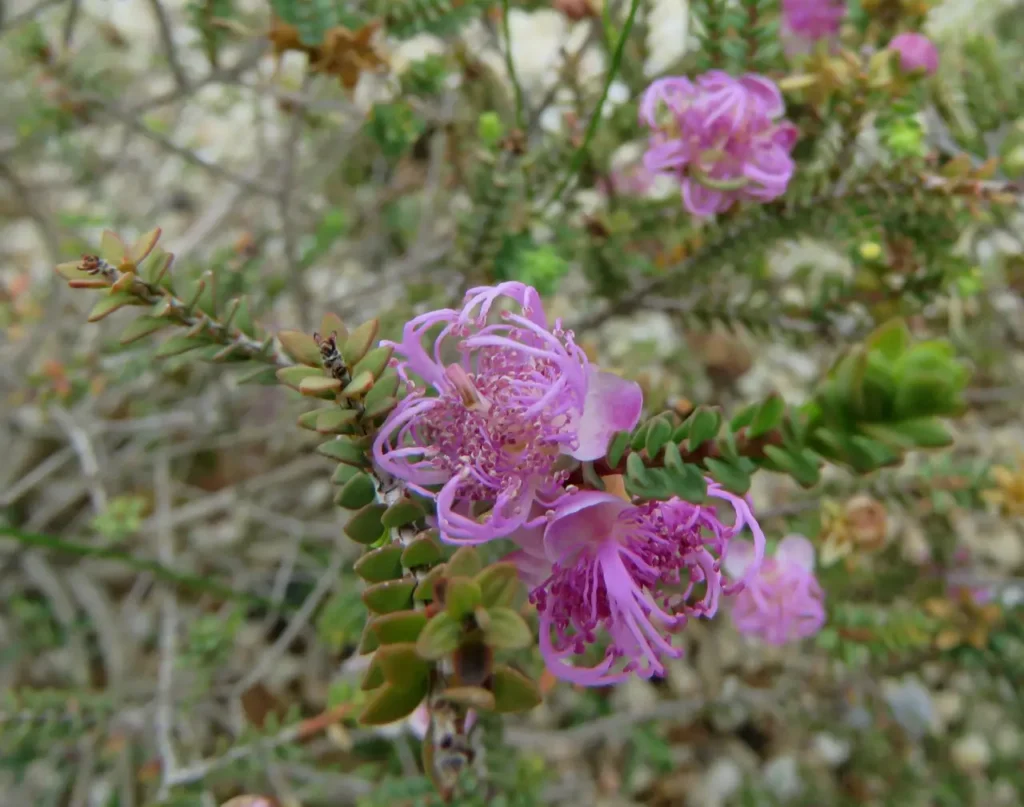
Appearance and Characteristics
Melaleuca pulchella is a small to medium-sized shrub that showcases distinctive features that set it apart from other members of the Melaleuca genus. Its most remarkable attribute is its claw-like flower clusters, which lend the plant its common name “Clawflower.” The flowers are borne on short spikes and consist of tiny tubular florets with elongated petals that curve outward, resembling the shape of a claw.
The Clawflower’s flowers come in a variety of colors, including shades of pink, purple, and occasionally white. These unique blooms create a captivating visual display that is especially striking against the backdrop of the shrub’s dark green foliage.
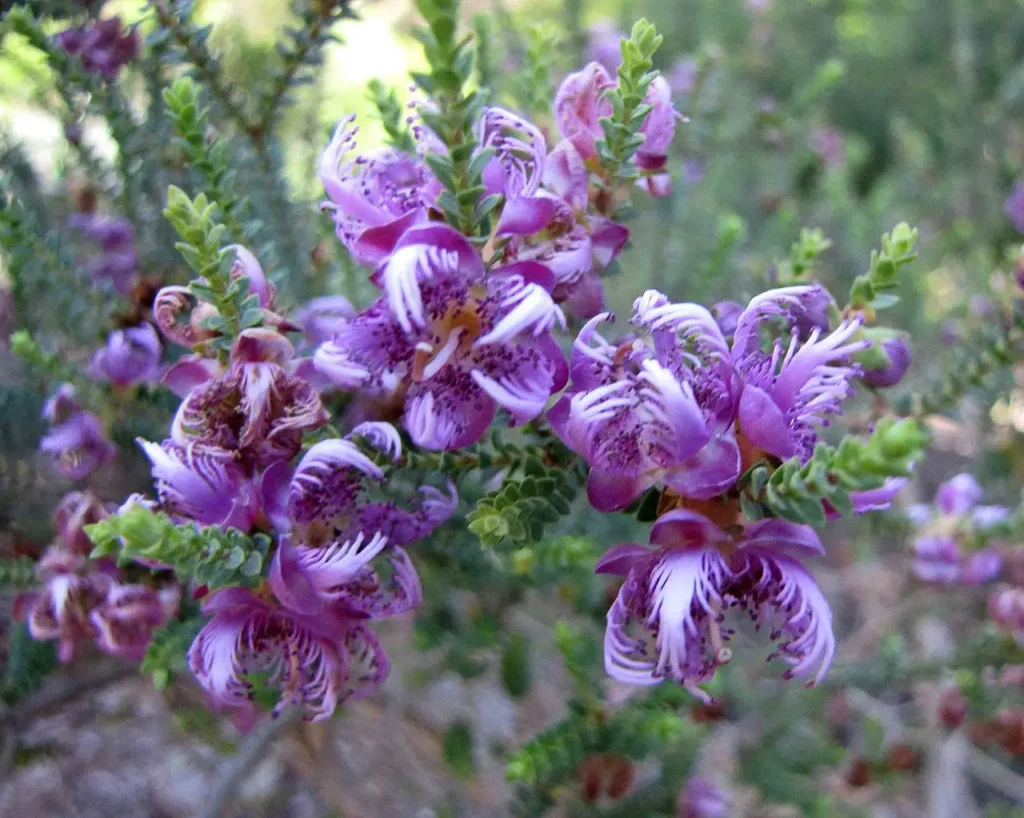
The color of the Melaleuca pulchella
Melaleuca pulchella, commonly known as the Clawflower or Cliff Honey-myrtle, is a shrub native to Australia. The color of the Melaleuca pulchella flowers is typically a vibrant and eye-catching shade of red or deep pink. The flowers are bottlebrush-like in appearance, with clusters of small, tubular blossoms densely packed together along a central spike.
The specific shade of red or deep pink can vary slightly based on factors such as soil conditions, sunlight exposure, and individual plants. However, the overall coloration of Melaleuca pulchella’s flowers tends to be in the red to pink spectrum, which makes them stand out in natural landscapes and gardens.
The colorful flowers of Melaleuca pulchella are not only visually appealing but also attract pollinators like bees and nectar-feeding birds, adding to their ecological significance.
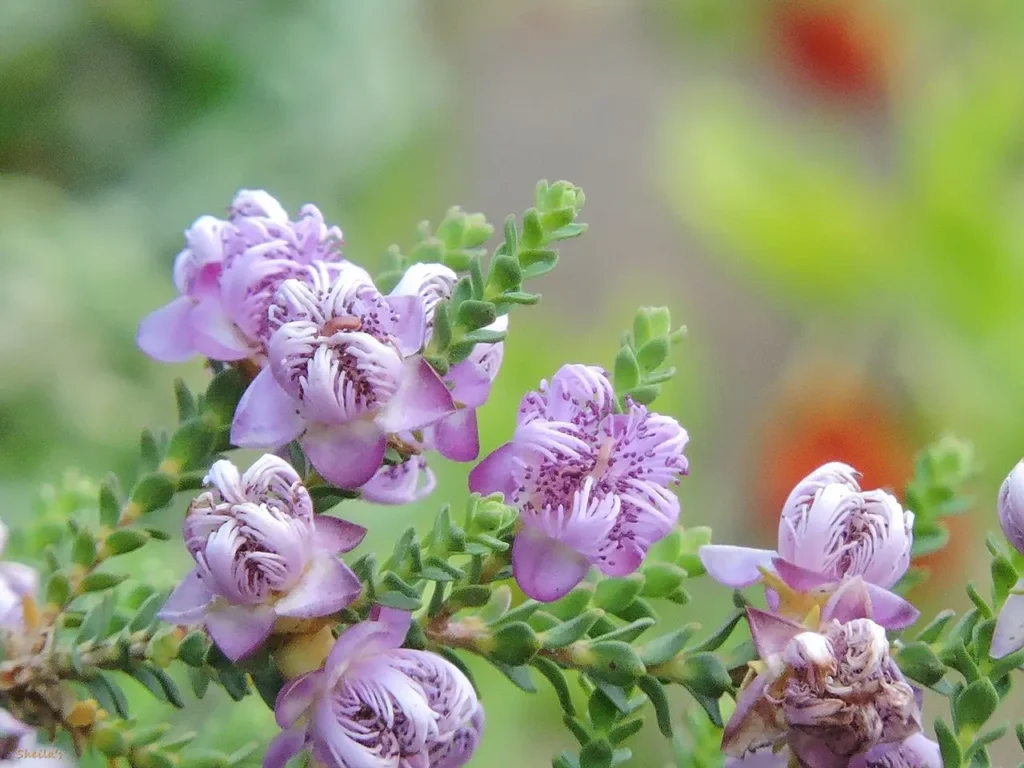
Habitat and Distribution
Melaleuca pulchella is native to the southern regions of Australia, where it thrives in a range of habitats. It can be found growing in heathlands, woodlands, and open forests, often in areas with sandy or well-drained soils. Its ability to adapt to different soil types and tolerate occasional periods of dryness contributes to its widespread distribution in its native range.
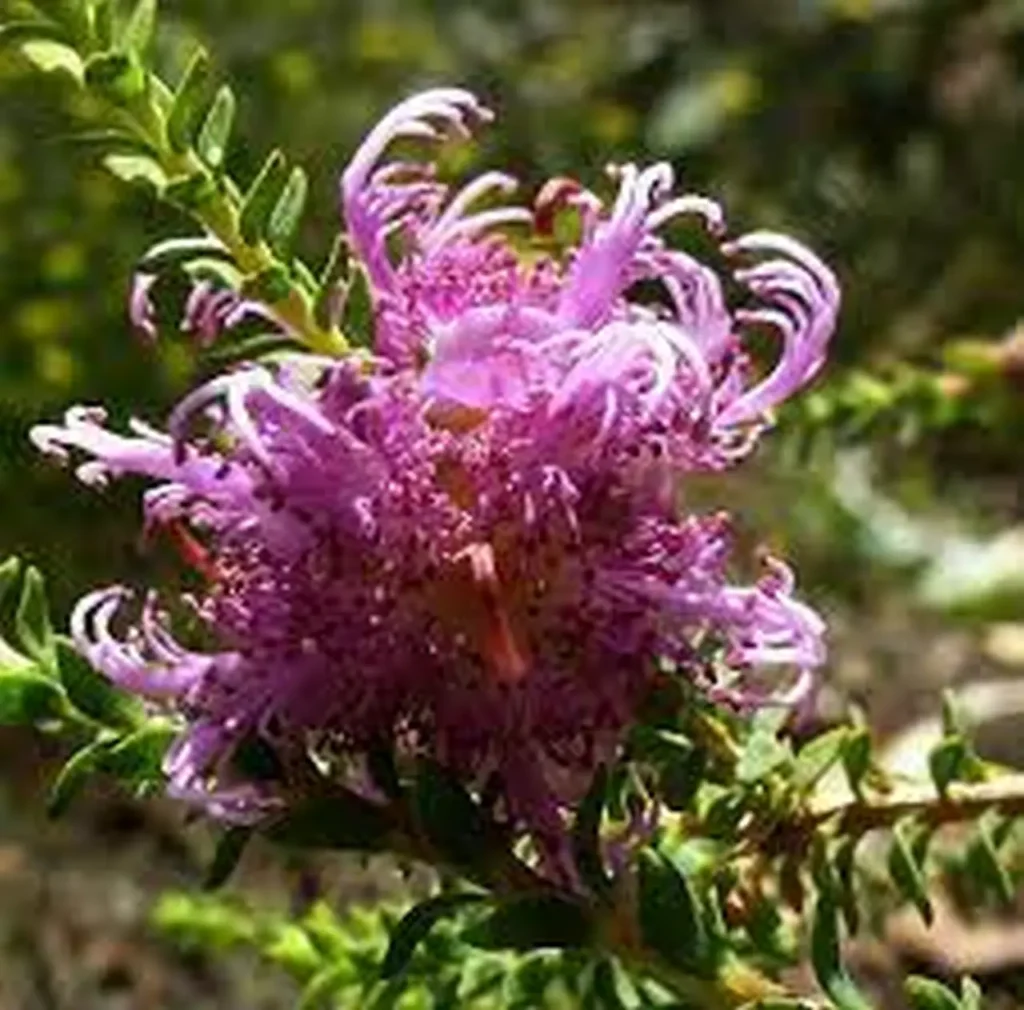
Ecological Importance and Uses
Beyond its aesthetic appeal, Melaleuca pulchella holds ecological significance in its native ecosystems. It provides nectar for a variety of pollinators, including bees, butterflies, and birds, contributing to the intricate web of interactions that support biodiversity. The flowers’ tubular shape is well-suited for attracting nectar-feeding species, which, in turn, aid in the plant’s reproduction through pollination.
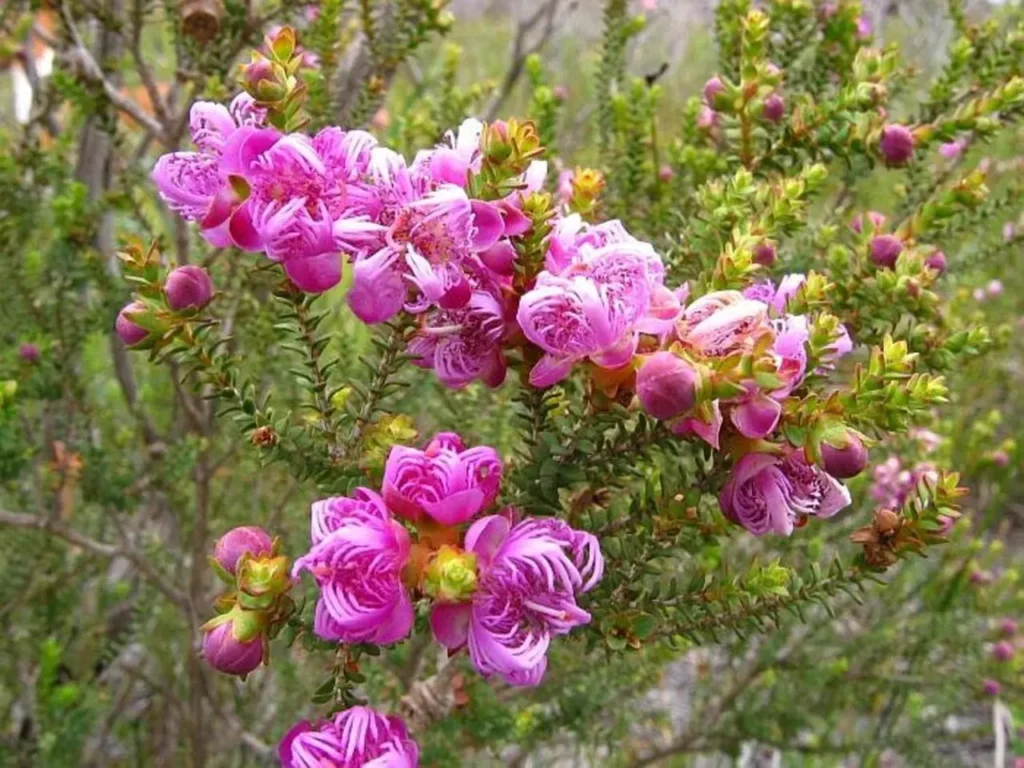
Cultural and Horticultural Aspects
Melaleuca pulchella’s unique appearance and charming flowers have captured the interest of gardeners and horticulturists, both in Australia and beyond. The Clawflower’s adaptability to a range of soil conditions and its relatively low maintenance requirements make it a desirable addition to gardens and landscapes. It can be cultivated as a specimen plant, in mass plantings, or even in containers, adding a touch of native beauty to outdoor spaces.
Cultivation and Care
To cultivate Melaleuca pulchella successfully, consider the following care guidelines:
- Light: Provide the plant with full sun to light shade, as it thrives in bright light conditions.
- Soil: Plant in well-draining soil with good aeration. Sandy or loamy soils are preferred.
- Watering: Water the Clawflower regularly during its establishment period, allowing the soil to slightly dry out between waterings. Once established, it can tolerate periods of drought.
- Pruning: Light pruning after flowering can help maintain the shrub’s shape and promote bushier growth.
- Fertilization: Apply a balanced, slow-release fertilizer during the growing season to support healthy growth and flowering.
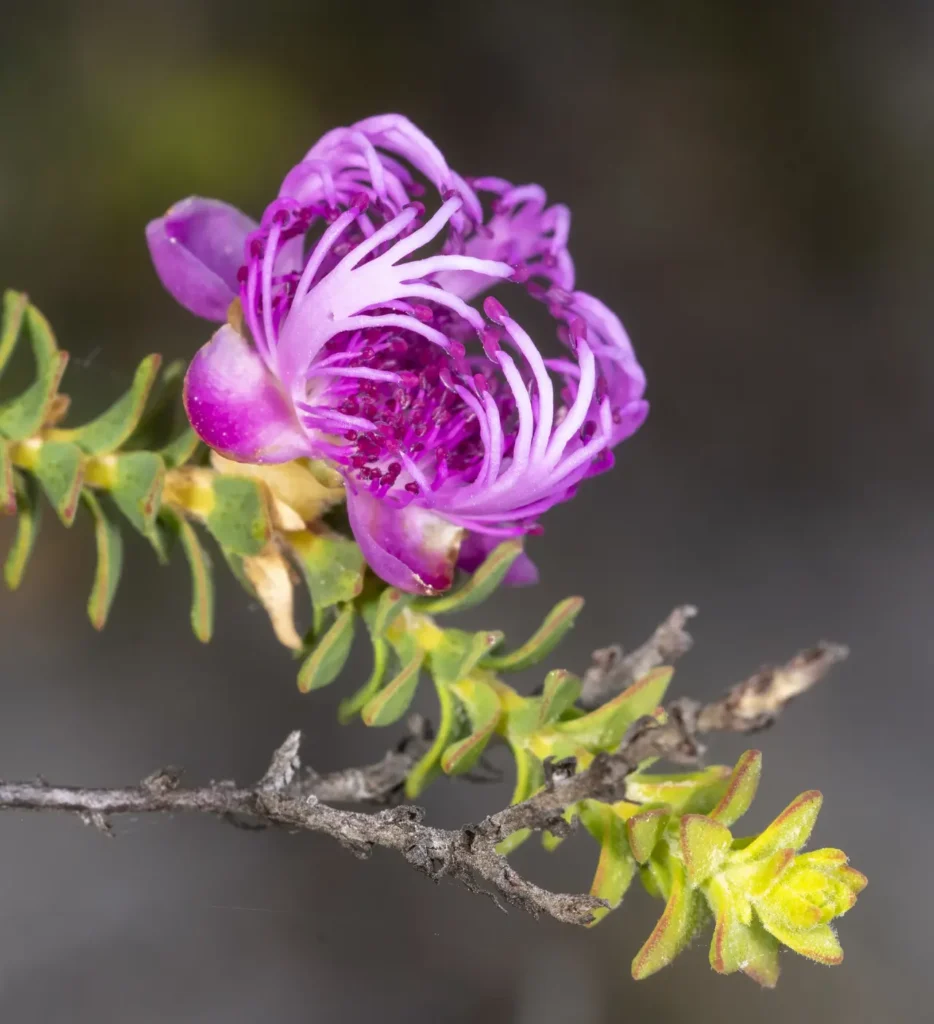
Melaleuca pulchella, or the Clawflower, stands as a testament to the enchanting diversity of Australian native flora. Its claw-like flowers, adaptability to varying habitats, and significance to pollinators highlight its vital role in maintaining healthy ecosystems. By cultivating and appreciating the Clawflower, we celebrate the beauty of native plants and contribute to the preservation of the unique landscapes that characterize the Australian continent.
